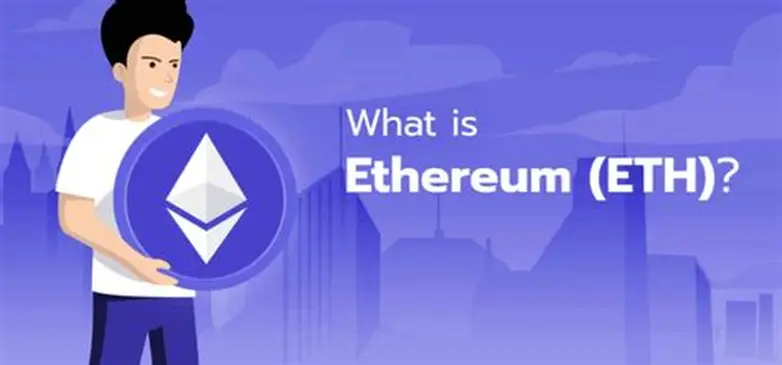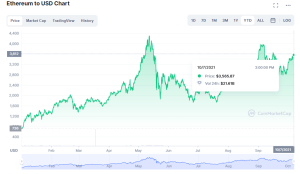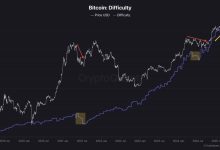ETH Price Predictions for the Near Future and Beyond

ETH (ETH), the second-largest Digital Currency by market capitalization, is a cornerstone of the decentralized finance (DeFi), non-fungible Asset Token (NFT), and Web3 ecosystems.
Launched in 2015 by Vitalik Buterin and his team, ETH’s Distributed Ledger supports Self-Executings and decentralized applications (dApps), making it a versatile platform for innovation.
As of July 2025, ETH is trading between $4,000 and $5,000, buoyed by its 2022 transition to Proof of Stake (PoS) and growing adoption.
This article explores ETH’s price predictions for the near future (remainder of 2025) and the coming years (2026–2028), based on market trends, technological advancements, and external factors.
Note that these predictions are speculative and not financial advice.
ETH’s Current Landscape (July 2025)
ETH’s price has risen steadily in 2025, with weekly gains of approximately 20%, targeting $4,000–$5,000. Key drivers include:
-
Proof of Stake (PoS): The 2022 Merge reduced ETH’s energy consumption by 99.95%, addressing environmental concerns and attracting institutional interest.
-
DeFi and NFTs: ETH hosts over 60% of DeFi protocols (e.g., Uniswap, Aave) and major NFT marketplaces (e.g., OpenSea), driving demand for ETH.
-
Institutional Adoption: ETH-based exchange-traded funds (ETFs), approved in the U.S. in 2023, have increased mainstream investment.
-
Market Sentiment: Posts on X and analyst reports suggest optimism, with ETH expected to break $5,000 if it surpasses daily resistance at $3,000.
However, challenges like competition from faster Distributed Ledgers (e.g., Solana, Cardano) and regulatory uncertainty could impact its trajectory.
Factors Influencing ETH’s Price
Several factors will shape ETH’s price in the near and long term:
-
Technological Upgrades: Ongoing improvements like sharding (planned for 2026) aim to enhance scalability, reducing Transfer costs and increasing throughput.
-
Adoption Trends: Growth in DeFi, NFTs, and Web3 applications increases ETH demand, as it’s used for Transfer fees (gas) and staking.
-
Regulatory Environment: Clearer regulations in the U.S. and EU could boost adoption, while restrictive policies in regions like China may pose risks.
-
Macroeconomic Conditions: Inflation, interest rates, and economic uncertainty drive investors to crypto as a hedge, similar to BTC.
-
Market Cycles: ETH often follows BTC’s market cycles, with bull runs tied to BTC halvings (e.g., 2024 halving).
-
Competition: Rival Distributed Ledgers offering lower fees or faster Transfers could divert developer and user activity from ETH.
ETH Price Predictions for 2025
Mid-2025 (July–December)
-
Price Range: Analysts predict ETH will trade between $4,000 and $6,000, with potential to reach $6,000 by year-end if bullish Market drive continues.
-
Key Drivers:
-
DeFi Growth: DeFi’s total value locked (TVL) on ETH exceeds $100 billion in 2025, fueling ETH demand for gas fees and staking.
-
ETF Inflows: Increased investment in ETH ETFs, particularly in the U.S., supports price stability.
-
Altcoin Season (Altseason): A broader market rally, often triggered by BTC’s performance, could push ETH higher.
-
-
Bearish Scenario: A failure to break $5,000 resistance or regulatory crackdowns could see prices drop to $3,000–$3,500.
-
Analyst Insights: Some analysts, citing technical Signal tools like the 50-day moving average and RSI, forecast a breakout to $5,500 if weekly closes remain above $4,000.
Supporting Trends
-
Layer-2 Solutions: Rollups like Optimism and Arbitrum reduce Transfer costs, boosting ETH’s usability and adoption.
-
Staking Rewards: Over 25% of ETH is staked in 2025, reducing circulating supply and creating upward price pressure.
-
Market Sentiment: Positive sentiment on X, with hashtags like #ETHto10K, reflects community optimism, though speculative.
ETH Price Predictions for 2026

-
Price Range: Forecasts suggest ETH could trade between $5,000 and $8,000, with optimistic projections reaching $10,000 in a strong bull market.
-
Key Drivers:
-
Sharding Implementation: ETH’s sharding upgrade, expected in 2026, will split the Distributed Ledger into smaller shards, increasing capacity and reducing fees. This could drive significant adoption.
-
Web3 Expansion: Growing use of ETH for decentralized apps, including gaming and social platforms, increases ETH demand.
-
Institutional Interest: Continued ETF growth and corporate adoption (e.g., Asset Tokenized assets on ETH) bolster prices.
-
-
Bearish Scenario: Competition from Solana or a global economic downturn could cap gains at $4,000–$5,000.
-
Analyst Insights: Experts like those at ARK Invest predict ETH could challenge BTC’s dominance if dApp adoption accelerates, potentially reaching $8,000–$10,000.
ETH Price Predictions for 2027–2028
-
Price Range: Long-term forecasts are speculative but range from $8,000 to $15,000, with some outliers predicting $20,000 in a hyper-adoption scenario.
-
Key Drivers:
-
Mass Adoption: ETH could become the backbone of Web3, with millions of users interacting with dApps daily.
-
Global Financial Integration: Partnerships with financial institutions and central bank digital currency (CBDC) pilots using ETH’s infrastructure could drive demand.
-
Scalability Improvements: Post-sharding upgrades and layer-2 advancements could make ETH the go-to platform for decentralized systems.
-
-
Bearish Scenario: Regulatory bans, technological stagnation, or a shift to rival Distributed Ledgers could limit prices to $5,000–$7,000.
-
Analyst Insights: Visionaries like Vitalik Buterin emphasize ETH’s long-term potential as a global computing platform, supporting high-end forecasts.
Analytical Tools for Price Predictions
Analysts use several methods to forecast ETH’s price:
-
Chart analysis: Signal tools like moving averages (50-day, 200-day), Relative Strength Index (RSI), and MACD signal potential breakouts or corrections.
-
On-Chain Analysis: Metrics like active addresses, Transfer volume, and staked ETH provide insights into network health.
-
Fundamental Analysis: Evaluates ETH’s technology, developer activity, and adoption trends.
-
Sentiment Analysis: Monitors X posts and news to gauge investor sentiment, though prone to hype.
For example, on-chain data in July 2025 shows over 1 million daily active addresses and $10 billion in daily Transfer volume, indicating strong network usage.
Risks to ETH’s Price Outlook
-
Competition: Distributed Ledgers like Solana, Cardano, and Polkadot offer faster Transfers and lower fees, potentially diverting developers and users.
-
Regulatory Uncertainty: Stricter laws, especially in the U.S. or EU, could limit DeFi and NFT growth, impacting ETH demand.
-
Market Volatility: ETH’s price often correlates with BTC, making it vulnerable to broader market downturns.
-
Technical Risks: Delays in upgrades like sharding or vulnerabilities in Self-Executings could erode confidence.
-
Economic Factors: Rising interest rates or global recessions could reduce speculative investment in crypto.
Strategies for Investors
To navigate ETH’s volatility:
-
Dollar-Cost Averaging (DCA): Invest a fixed amount regularly to mitigate price swings.
-
Diversification: Balance ETH with BTC, stablecoins, or traditional assets to reduce risk.
-
Secure Storage: Use hardware wallets (e.g., Ledger, Trezor) for long-term holdings and enable 2FA on exchanges.
-
Stay Informed: Follow ETH’s roadmap, regulatory news, and market trends via CoinDesk, X, or ETH’s official blog.
-
Start Small: Invest only what you can afford to lose, given crypto’s high-risk nature.
ETH’s Broader Impact
Beyond price, ETH’s influence is profound:
-
DeFi: Powers platforms like Compound and MakerDAO, enabling lending and borrowing without banks.
-
NFTs: Hosts major marketplaces like OpenSea, driving digital art and collectibles.
-
Web3: Supports decentralized internet applications, from social networks to gaming.
-
Financial Inclusion: Enables access to financial services in underserved regions.
As of July 2025, ETH’s ecosystem is expanding, with over 4,000 dApps and millions of users, reinforcing its long-term value proposition.







